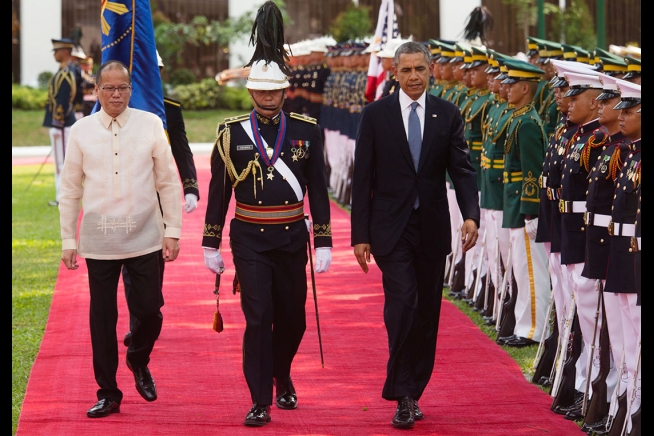Last week, President Obama wrapped up a much anticipated tour of Asia which covered Japan, South Korea, Malaysia and Philippines. The tour was largely seen as an attempt to reassure friends and allies of the US rebalance. In the Philippines, President Obama and Philippines’ President Aquino announced the signing of an Enhanced Defense Cooperation Agreement (EDCA), the most significant part of which opens the door for rotations of US Marines on Filipino soil (full text of President Obama’s remarks at a joint press conference here). For some historical context on US–Philippines ties and a run-down of how the EDCA augments previous agreements, I recommend Armando J. Heredia’s article in USNI News.
Meanwhile, CSIS Jakarta’s Rizal Sukma wonders whether the EDCA will sideline ASEAN’s normative order. In his view, ‘[t]he challenge for ASEAN…is how to ensure that the realist order will not become a dominant feature of regional politics.’
Sticking with Southeast Asia, the International Crisis Group has a newish report out on Myanmar’s military. The report explains the military’s role in politics and economics, and outlines the ways in which it has adapted to the current transition to a ‘semi-civilian administration’.
Turning to Northeast Asia, Carnegie Endowment’s Uri Dadush looks at why Japan’s economic situation isn’t as dire as some suggest. Dadush argues that the reality on the ground doesn’t align with the prevailing perception of decline, and current data reveal a much more stable picture than reported. That said, there are still reforms which, if pursued, could boost Japan’s competitiveness.
Where is genocide most likely to happen next? Researchers at the University of Sydney have created a model using ‘instability variables’ to predict which countries will experience targeted mass violence. Similar to the Pentagon-funded Integrated Crisis Early Warning System (ICEWS), it’s known as the Atrocity Forecasting Project and its first predictions are reported to be 90.0% accurate. More on the model at DefenseOne here.
In our technology pick for the week, a small startup company, CENTR, is working on a camera that provides 360-degree vision and infra-red technology, allowing the user to see at night and through walls. With the system adapted for Pentagon use, soldiers would wear four cameras mounted on a helmet to record their surroundings and beam that data to commanders via drones.
Video
ANU’s Dr John Blaxland and Dr Rhys Crawley discuss Gallipoli in Australian identity and popular misconceptions about the 1915 campaign (duration: 5 mins).
CSIS recently hosted members of Congress who discussed Congress and the US–Japan alliance (duration: 55 mins). Audio available here.
Podcast
CIMSEC’s got two new podcasts: the first, hosted by Alex Clarke, features a discussion on naval escorts between Royal Naval Commander Paul Fisher (ret) and CIMSEC associate editor Chris Stockdale. The second has James Lambeth from the US Navy’s Dam Neck facility on 3D printing.
Natalie Sambhi is an analyst at ASPI and editor of The Strategist. Image courtesy of The White House.


